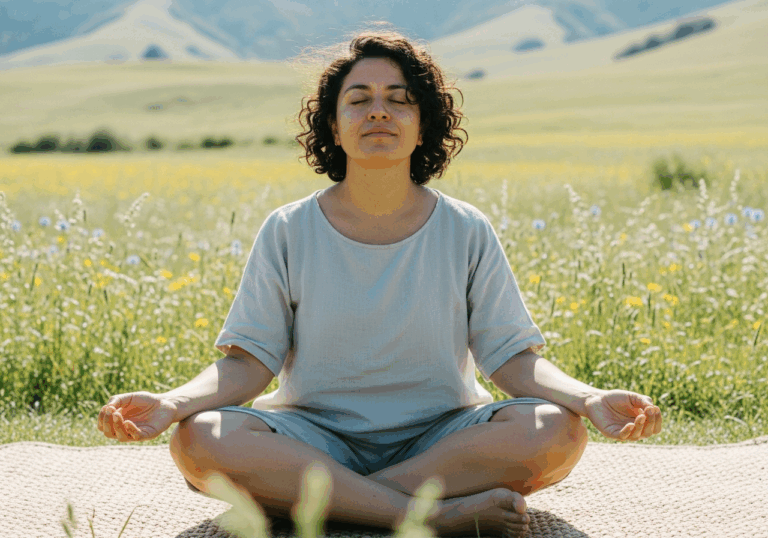Science-Backed Tips
Breathe Slow, Feel Better: The Power of 6 CPM Breathing
One minute of slow breathing boosts heart health and mood.
📊 Did you know?
💡 Why It Matters
1️⃣
Activating vagal tone through slow breathing can reduce physiological anxiety markers, leading to a calmer mood.
2️⃣
Improved HRV is associated with better cardiovascular health and resilience to stress.
3️⃣
Regular practice of slow breathing may enhance overall wellbeing and mental health.
✅ Try These Micro-Tips
🎯
Practice 6 cpm slow breathing for 1 minute daily.
🎯
Incorporate slow breathing exercises into your morning routine for better stress management.
🎯
Use guided breathing apps to maintain consistency in your practice.
🎯
Combine slow breathing with mindfulness meditation for enhanced benefits.
📚 The study
The objective was clear: to test how brief sessions of slow breathing could influence heart rate variability (HRV) and heart rate (HR).
The results were compelling, showing a significant increase in RMSSD and HF values, alongside a notable reduction in resting heart rate.
But why does this matter? Activating the vagal tone through slow breathing techniques can effectively reduce physiological markers of anxiety, leading to a calmer and more balanced mood.
Improved HRV is not just a number; it is closely linked to better cardiovascular health and a greater resilience to stress.
By incorporating regular slow breathing practices into our daily routines, we can enhance our overall well-being and mental health.
This study highlights the importance of simple yet powerful techniques that can be easily integrated into our lives, offering a pathway to improved emotional and physical health.
As we navigate the complexities of modern life, embracing slow breathing could be a transformative step towards achieving a more serene and healthy existence.
❓ Frequently Asked Questions ❓
Learn more
What is slow breathing and how does it work?
Slow breathing involves taking deep, controlled breaths at a rate of six breaths per minute. This practice activates the parasympathetic nervous system, promoting relaxation and reducing stress levels.
How does practicing slow breathing affect heart rate variability (HRV)?
Practicing slow breathing increases RMSSD and HF HRV, which are indicators of improved heart rate variability. This enhancement reflects better autonomic nervous system balance and overall cardiovascular health.
What are the benefits of increased RMSSD and HF HRV?
Increased RMSSD and HF HRV are associated with improved cardiovascular health and resilience to stress. These markers indicate a well-functioning autonomic nervous system, which can enhance overall well-being.
How long should I practice slow breathing for optimal results?
Practicing slow breathing for just one minute daily can yield significant benefits in mood and physiological markers. Consistency is key to experiencing the full advantages of this technique.
Can slow breathing help with anxiety management?
Yes, slow breathing activates vagal tone, which can reduce physiological anxiety markers. This leads to a calmer mood and improved emotional regulation.
What is the recommended breathing rate for slow breathing exercises?
The recommended breathing rate for slow breathing exercises is six breaths per minute. This rate is effective for enhancing parasympathetic activation and promoting relaxation.
How can I incorporate slow breathing into my daily routine?
You can incorporate slow breathing into your morning routine or use guided breathing apps to maintain consistency. Setting aside just one minute each day can make a significant difference in your stress management.
Is it beneficial to combine slow breathing with other practices?
Yes, combining slow breathing with mindfulness meditation can enhance the benefits of both practices. This combination can lead to deeper relaxation and improved mental clarity.
What physiological changes occur during slow breathing?
During slow breathing, heart rate decreases, and HRV markers such as RMSSD and HF values increase. These changes indicate enhanced parasympathetic activity and reduced physiological stress.
How does slow breathing improve mood?
Slow breathing improves mood by activating the parasympathetic nervous system, which reduces stress and anxiety. This physiological response leads to a calmer and more balanced emotional state.





